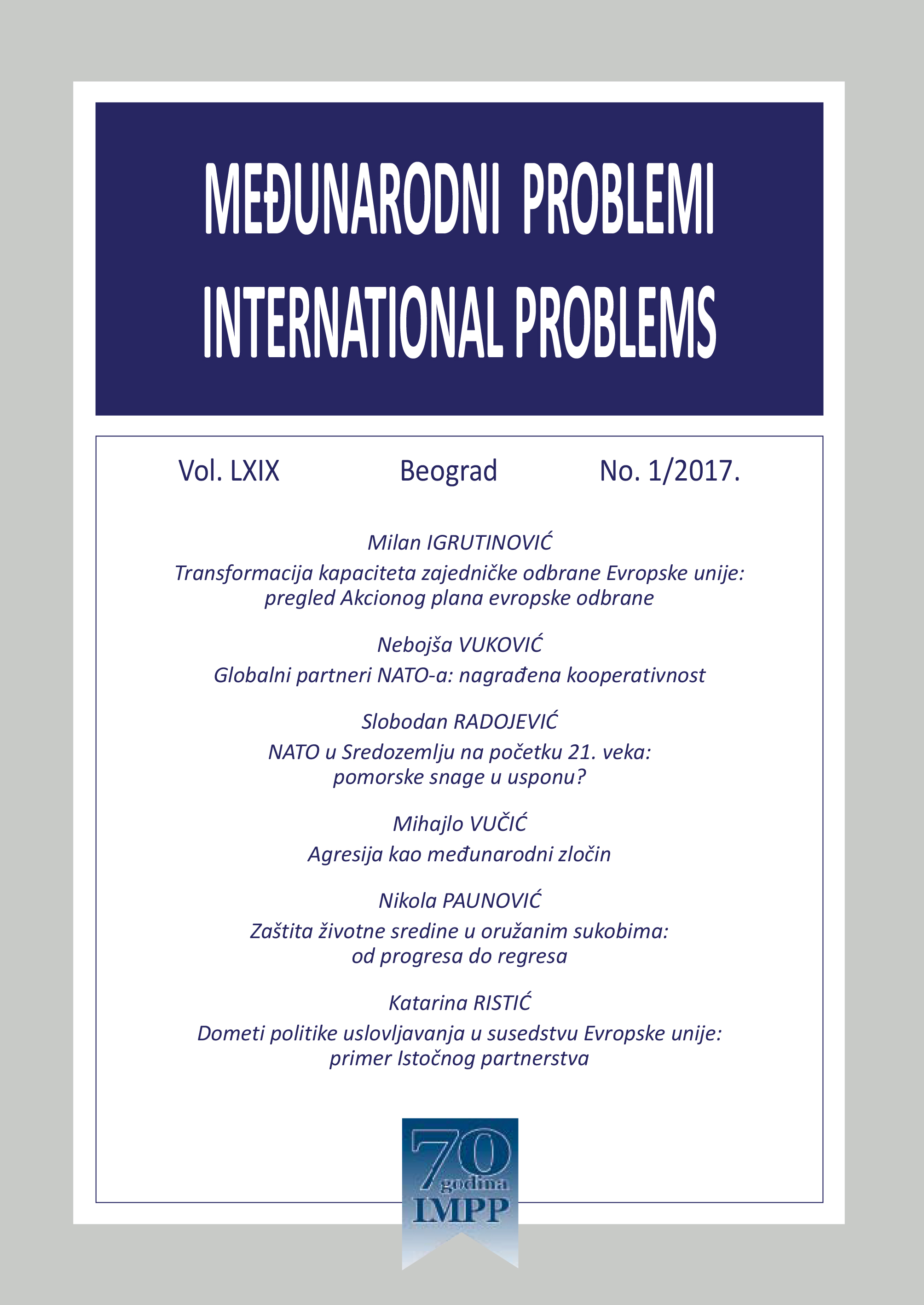NATO u Sredozemlju na početku 21. veka: pomorske snage u usponu?
NATO Naval Forces in the Mediterranean
Author(s): Slobodan M. RadojevićSubject(s): Politics / Political Sciences
Published by: Институт за међународну политику и привреду
Keywords: NATO; Mediterranean; naval force; naval operation; Standing NATO Maritime Groups
Summary/Abstract: The NATO area covers more water than land. The Atlantic ocean, the Mediterranean, the Baltic and the Black Sea geographically and strategically unite the allies. NATO is a maritime alliance because almost all Member States have a maritime orientation and are highly dependent on maritime trade. To protect its interests on the seas and oceans NATO countries built up and maintained strong naval forces. Twenty of the 28 Member States of the Alliance has its own Navy – naval forces. Also, the Alliance has developed a highly-trained naval capacity for immediate response – Standing NATO naval forces consisting of naval ships of Member States. The use of naval power is more frequent, while more than 80 percent of local interventions and wars were conducted from the sea and over the sea. After the Cold War, NATO has dominated in the global maritime domain with robust naval forces and conducted several key naval operations to project the power and influence events on the ground. NATO naval operations have been conducted from the Balkans to the South Asia and North Africa. In the post-Cold War security environment, the Mediterranean is an area of central geopolitical and geostrategic interest to NATO. Also, NATO has a strong economic and energy interests in the Mediterranean. In that region, the naval component of the Alliance is extremely active. NATO maritime activities began during the early 1990's. NATO conducted out of area operation – Operation Sharp Guard, a naval blockade of the Federal Republic of Yugoslavia. Significant naval forces, including attacks from the distance from the sea, participated in Operation Allied Force in Yugoslavia. After the terrorist attacks on the United States, NATO has increased the capacity of naval forces in the Mediterranean and established Operation Active Endeavour. This naval operation today transformed in Operation Sea Guardian and NATO with naval forces exercised full control and supervision of all maritime activities around the Mediterranean. Today, NATO has the Standing NATO Maritime Groups 1 (SNMG 1) and Standing NATO Maritime Groups 2 (SNMG 2), Standing NATO Mine Countermeasures Group (SNMCG 1) and Standing NATO Mine Countermeasures Group (SNMCG 2). NATO's Standing Naval Forces are no longer associated with a single area, but they must be ready for use anywhere. At present, NATO naval forces in the Mediterranean conduct maritime security operations and provides assistance in dealing with refugees and the migration crisis in the Aegean Sea. Today, NATO is a maritime alliance in action, actively preparing for the maritime century.
Journal: Међународни проблеми
- Issue Year: LXIX/2017
- Issue No: 1
- Page Range: 50-77
- Page Count: 28
- Language: Serbian

